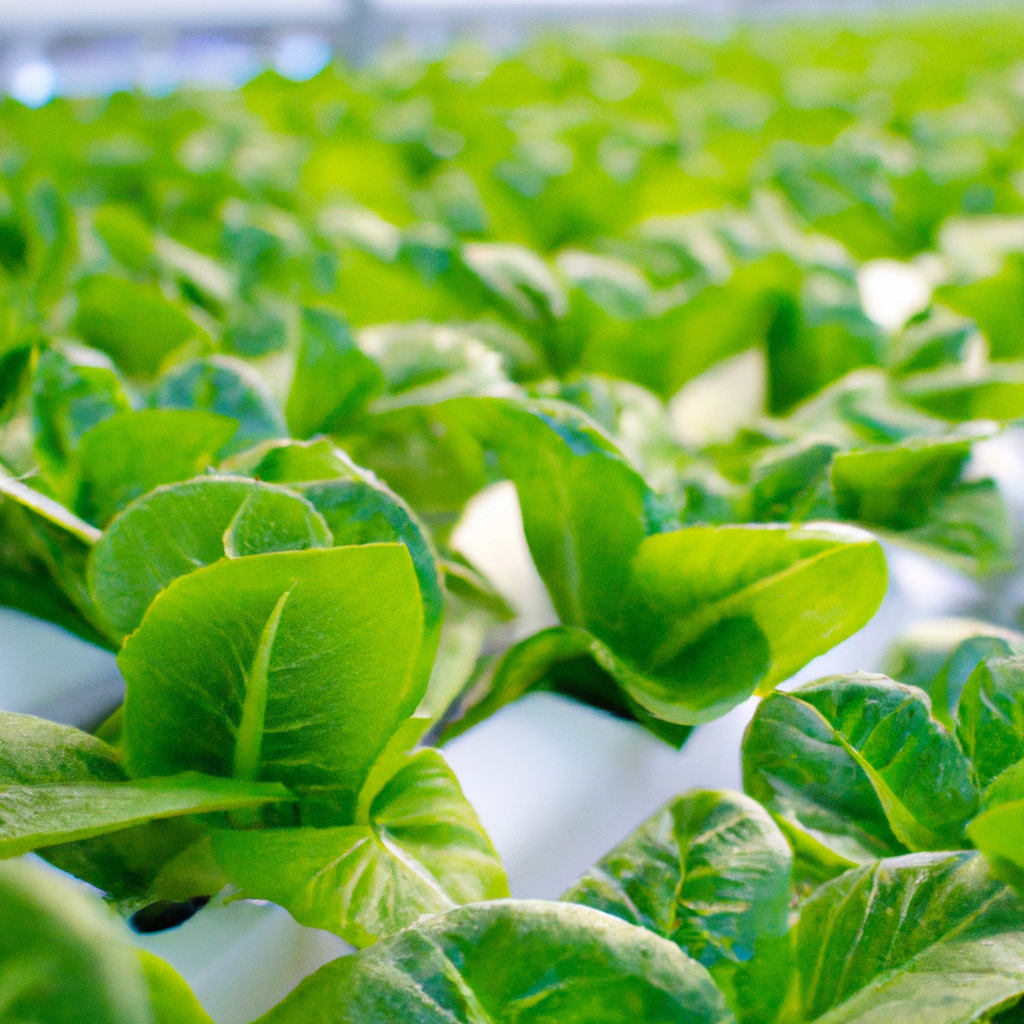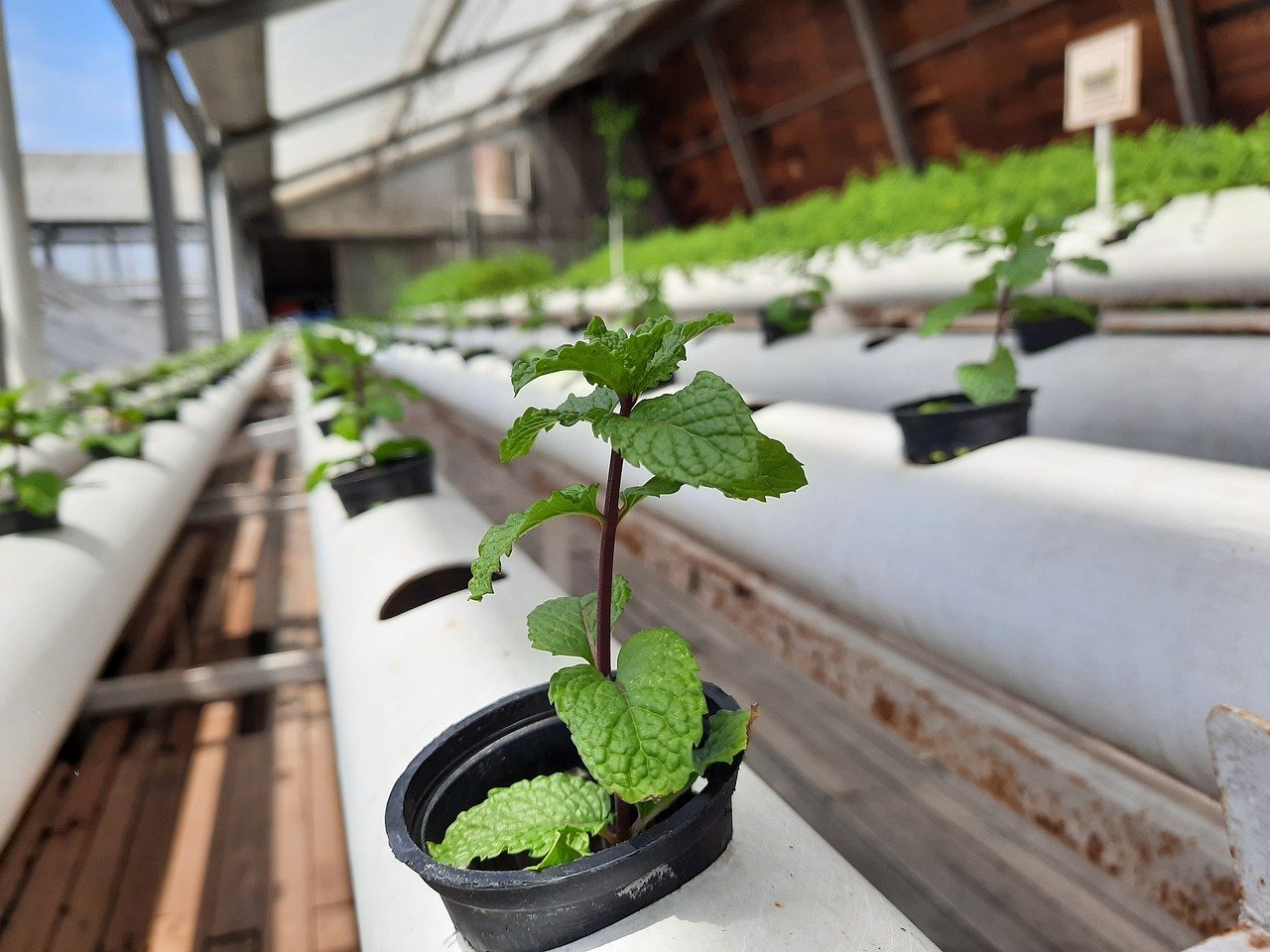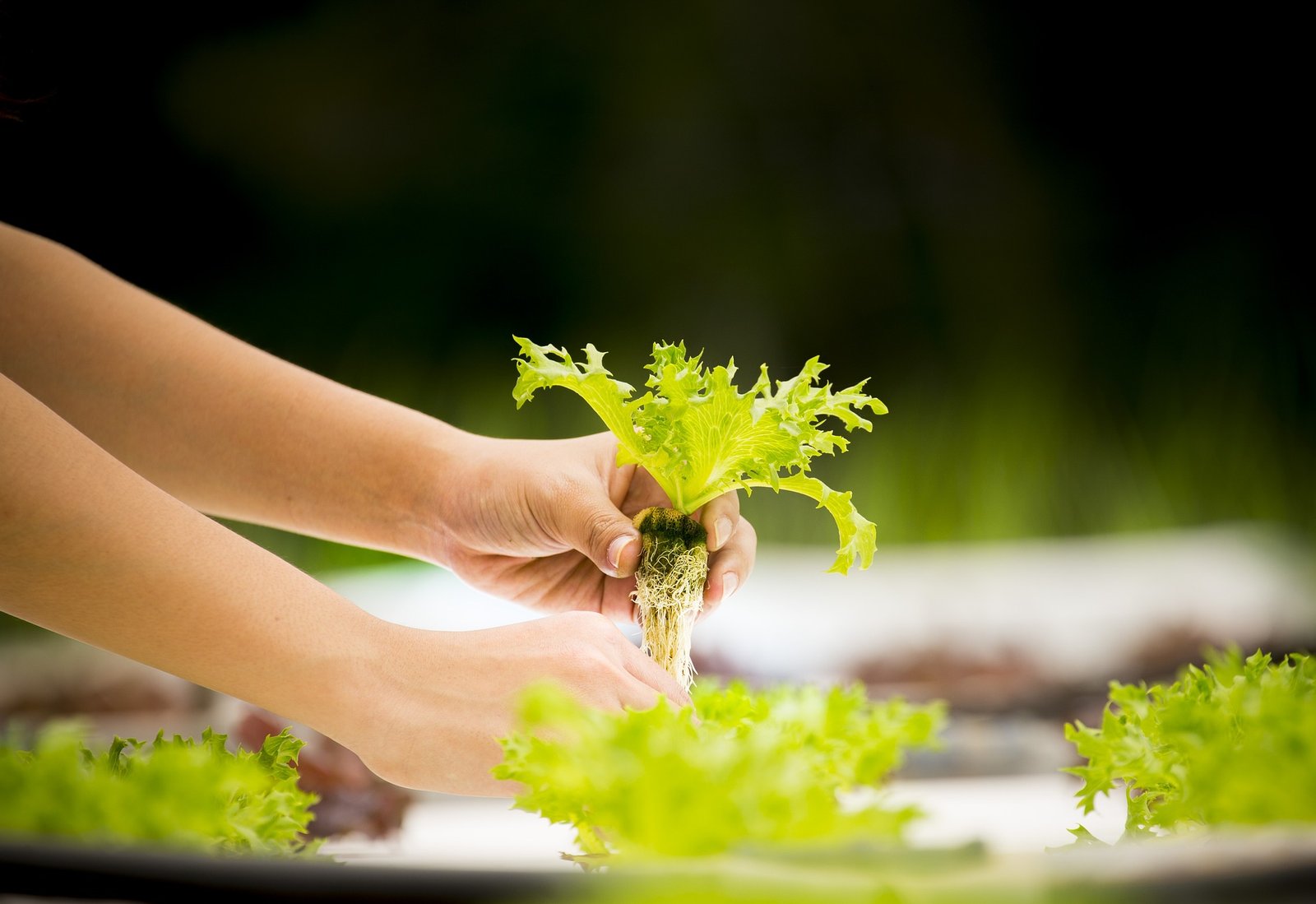Are Hydroponics Healthy: A Bountiful Harvest of Health and Sustainability
The Fascinating World of Hydroponics
Welcome to the intriguing realm of hydroponics, where plants thrive without soil and growers can cultivate a variety of vegetables efficiently and sustainably. In this article, we will explore the definition, history, and most importantly, the health benefits of hydroponics. Are hydroponics healthy?
So buckle up and get ready to immerse yourself in this innovative way of growing nutrient-rich produce.
Definition of Hydroponics Unlocking the Secrets of Soilless Growing
To begin our journey, let’s first understand what hydroponics really is. At its core, hydroponics is a method of growing plants without traditional soil-based mediums.
Instead, it relies on a carefully balanced nutrient solution that provides all essential elements required for plant growth. This inventive approach allows growers to control every aspect of a plant’s environment to optimize growth and maximize yields.
Brief History of Hydroponics Ancient Origins Leading to Modern Innovations
While hydroponic cultivation may seem like a cutting-edge technique, its roots can be traced back thousands of years. The Hanging Gardens of Babylon – one of the
Seven Wonders of the Ancient World – are believed by some historians to have employed hydroponic principles in their design.
However, it wasn’t until the 19th century that modern hydroponic techniques began taking shape. Driven by curiosity about plant nutrition and growth, scientists like
Julius von Sachs and William Frederick Gericke pioneered experiments that paved the way for today’s methods.
Gericke’s work in California during the 1930s propelled hydroponics into mainstream agriculture when he successfully grew tomatoes using only nutrient-rich water.
His breakthrough not only demonstrated the potential of hydroponics but also laid the foundation for future advancements in soilless cultivation.
Since then, hydroponics has evolved significantly, finding applications in commercial greenhouses, home gardening systems, and even space missions. This rich history highlights the enduring quest to unlock the full potential of plant growth and nutrition using innovative approaches like hydroponics.
The Efficient Water Usage of Hydroponics
A Soaring Comparison to Traditional Soil-based Farming
When it comes to water usage, hydroponics outshines traditional soil-based farming methods. In traditional agriculture, plants are grown in soil that requires regular irrigation. Unfortunately, a significant amount of this water is wasted due to evaporation and inefficient absorption by the plants’ roots.
On the contrary, hydroponic systems offer a highly efficient mechanism for water utilization. By directly supplying water to the plant’s root system, hydroponic growers can ensure minimal wastage and maximum absorption.

Water Conservation Techniques in Hydroponics
Hydroponics utilizes various innovative techniques that contribute to effective water conservation. One such method is recirculating systems where excess nutrient solution not absorbed by the plants is collected and reused.
This closed-loop system reduces the overall water consumption significantly while still providing ample hydration for healthy plant growth. Additionally, hydroponic setups often incorporate drip or trickle irrigation systems that deliver small amounts of water directly to each plant’s roots, preventing unnecessary runoff or evaporation.
Enhanced Nutrient Absorption: A Treasure Trove for Healthy Plants
Control Over Nutrient Levels and Ratios
One of the remarkable benefits of hydroponics is the unparalleled control over nutrient levels and ratios supplied to plants. Each crop has specific nutritional requirements, and with hydroponics, these needs can be meticulously met through careful adjustment of nutrient solutions. This precise control ensures optimal absorption of essential minerals by plants without any risk of over-supplying or depriving them.
The Blessing: Absence of Soil-Borne Diseases
In traditional soil-based farming, plants are susceptible to various diseases caused by pathogens present in the soil. However, when grown hydroponically without soil, plants are shielded from these destructive microorganisms.
Without the risk of soil-borne diseases, hydroponic crops can flourish in a clean and disease-free environment. This not only enhances their growth but also eliminates the need for harmful chemical pesticides or fungicides that are often used in traditional agriculture.
Year-Round Crop Production: Breaking Free From Seasonal Limitations
Elimination Of Seasonal Limitations
Hydroponics offers a significant advantage by breaking free from the constraints of seasonal limitations that affect traditional farming. In conventional agriculture, specific crops can only be grown during specific seasons due to climate restrictions.
However, hydroponic setups provide the flexibility to grow crops year-round regardless of external weather conditions. By creating an artificial environment where temperature, humidity, and lighting can be controlled precisely, hydroponic growers ensure consistent yields and a steady supply of fresh produce throughout the year.
Indoor Hydroponic Systems For Consistent Yields
Indoor hydroponic systems play a crucial role in maintaining consistent yields by eliminating dependence on external factors such as sunlight and weather patterns. With advancements in artificial light technology, hydroponic growers can now create optimal lighting conditions tailored to each crop’s requirements.
Are Hydroponics Healthy? By simulating sunlight using LED or fluorescent lights, plants receive the necessary light spectrum for photosynthesis at any time of the day or night. This indoor cultivation approach enables growers to bypass seasonal limitations entirely and achieve reliable harvests regardless of geographical location or climate.
Hydroponics offers numerous benefits when it comes to water usage, nutrient absorption, and year-round crop production. The efficient water utilization methods employed within hydroponics contribute to conserving this precious resource while ensuring plants receive adequate hydration for healthy growth. Are Hydroponics Healthy?
Moreover, hydroponics grants growers precise control over nutrient levels and ratios resulting in highly nutritious produce without being dependent on soil. By eliminating seasonal limitations and deploying indoor hydroponic systems, farmers can enjoy consistent yields throughout the year, providing us with an uninterrupted supply of fresh and healthy vegetables grown hydroponically.

The Nutritional Powerhouse Of Hydroponic Produce
Increased Vitamin And Mineral Content
When it comes to nutrition, hydroponic vegetables are often hailed as the cream of the crop. These plants, grown in a carefully controlled environment without soil, have shown remarkable increases in vitamins and minerals compared to conventionally grown counterparts.
Studies have revealed that hydroponically grown lettuce contains significantly higher levels of vitamins C, E, and K. These essential nutrients play a vital role in maintaining a healthy immune system, promoting good vision and skin health, and supporting blood clotting functions. Furthermore, hydroponically grown tomatoes are renowned for their enhanced mineral uptake.
By cultivating these juicy red fruits using nutrient solutions directly delivered to the roots instead of relying on soil-based absorption, hydroponic farming allows for optimal nutrient balance. As a result, tomatoes benefit from increased levels of vital minerals such as potassium, calcium, and magnesium that contribute to strong bones and teeth while supporting proper nerve function.
Reduced Pesticide Exposure: A Healthier Choice
One concerning aspect of conventionally grown vegetables is the presence of pesticide residues that can pose risks to human health. The use of pesticides in traditional agriculture aims to control pests but may leave behind chemical residues on the produce we consume.
In contrast, hydroponics offers a promising solution by significantly reducing pesticide use through its controlled environment. By maintaining pest-free conditions in indoor setups or employing organic practices specific to hydroponics systems (known as organic hydroponics), farmers can minimize or eliminate the need for harmful chemical pesticides altogether.
As consumers become increasingly conscious about their food choices and their impact on personal health and the environment, opting for hydroponic food provides them with a nutritious alternative with reduced exposure to potentially harmful substances. So next time you reach for those vibrant greens or juicy tomatoes at your local grocery store or farmer’s market, consider the benefits of hydroponic produce.
These vegetables not only grow in a nutrient-rich solution that enhances their nutritional value but also offer reduced pesticide exposure, making them a healthier choice for you and your loved ones. Remember, hydroponics is not just about growing plants; it’s about cultivating a future where food can be both nutritious and sustainable.
Potential Challenges and Solutions
Maintaining Proper pH And Nutrient Balance
The Delicate Dance of Hydroponic Nutrient Management One of the key challenges in hydroponics is maintaining the proper pH and nutrient balance for optimal plant growth.
Unlike soil-grown plants, where soil acts as a natural buffer, hydroponic systems require regular monitoring to ensure the pH levels remain within the desired range. Fluctuations in pH can hinder nutrient absorption and compromise plant health.
To overcome this challenge, hydroponic growers must prioritize regular monitoring of pH levels. You can achieve this by using simple testing kits or digital meters that provide accurate readings.
By proactively measuring and adjusting pH levels as needed, growers can create an ideal environment for their plants to thrive. In addition to monitoring pH, the use of pH buffers and nutrient solutions is crucial in maintaining a balanced hydroponic system.
We carefully formulate these solutions to provide essential minerals and trace elements necessary for plant growth. By following recommended guidelines provided by experts or suppliers, growers can ensure that their plants receive the appropriate nutrients at all stages of development.
Disease management without soil
Soil-free Solutions for Disease-Free Crops. One significant advantage offered by hydroponics is its ability to limit soil-borne diseases that commonly afflict conventionally grown crops.
However, this doesn’t imply that disease management gets completely eliminated in hydroponic systems; instead, it adopts a different approach. Hydroponic growers must adopt preventive measures such as sterilization techniques to mitigate the risk of diseases impacting their crops.
This includes regularly disinfecting equipment, ensuring proper hygiene practices, and implementing strict protocols during planting and harvesting. Furthermore, beneficial microbes play a vital role in disease suppression within hydroponics systems.
These microbes act as natural protectors against harmful pathogens by colonizing plant roots and providing a shield against diseases. The introduction of beneficial microbes, either through inoculants or organic amendments, can greatly enhance the overall health and disease resistance of hydroponically grown plants.
are there health benefits to using hydroponics for growing plants?
When evaluating the benefits of hydroponics, it’s clear that this method offers several health advantages for plant growth. By allowing for precise control over nutrients and water, hydroponic systems can minimize the risk of soil-borne diseases and pests, resulting in healthier plants and potentially healthier produce for consumers.
Energy Consumption In Indoor Setups
Illuminating the Path to Energy Efficiency Indoor hydroponic setups, often utilized for year-round crop production, require a significant amount of energy to power grow lights and maintain optimal environmental conditions. As growers strive for sustainability and energy efficiency, evaluating lighting options becomes crucial.
Advancements in LED (Light Emitting Diode) technology have revolutionized indoor farming by offering highly efficient lighting solutions. LED grow lights consume less energy compared to traditional high-intensity discharge (HID) lamps while providing specific light spectra tailored to meet plant requirements.
By utilizing LED lights with customizable settings, growers can optimize energy consumption while ensuring optimal growth and yield. Additionally, integrating renewable energy sources such as solar panels or wind turbines into indoor hydroponic systems can further reduce environmental impact.
This not only decreases reliance on fossil fuels but also offers long-term cost-saving benefits for growers. Although hydroponics presents unique challenges compared to conventional soil-based farming methods, viable solutions exist for each obstacle.
By maintaining proper pH and nutrient balance through regular monitoring and utilizing pH buffers and nutrient solutions, hydroponic growers can ensure their plants receive optimal nutrition. Disease management without soil entails implementing sterilization techniques and harnessing the power of beneficial microbes for disease suppression.
Furthermore, by evaluating energy-efficient lighting options like LEDs and exploring integration with renewable energy sources. Growers can minimize the ecological footprint of indoor hydroponic setups. With these solutions at hand. Hydroponics continues to evolve as a healthy and sustainable method of cultivating nutritious produce that meets the highest standards of food safety and quality.

Conclusion: Are Hydroponics Healthy
Throughout this exploration of hydroponics, it becomes evident that this innovative method of growing plants has numerous benefits. Hydroponics enables efficient water usage, enhanced nutrient absorption, and year-round crop production.
Moreover, hydroponic produce showcases increased vitamin and mineral content while reducing pesticide exposure. Although challenges such as maintaining nutrient balance and disease management without soil persist, modern techniques provide effective solutions.
While there is still room for improvement in energy consumption, advancements in lighting technology and renewable energy integration are promising. As we conclude our discussion on the healthiness of hydroponics. It is clear that this method holds tremendous potential for transforming agriculture into a sustainable and nutritious practice.
By harnessing the power of controlled environments and precise nutrient delivery. Hydroponic systems offer a practical solution to address water scarcity issues associated with traditional farming methods. Furthermore, the absence of soil-borne diseases reduces the need for harmful pesticides. While providing consumers peace of mind regarding produce quality.
Pushing The Boundaries Of Healthy Agriculture
Researchers have discovered that conventionally grown crops cannot match the enhanced vitamin content found in hydroponically grown vegetables. The controlled environment allows plants to absorb nutrients optimally throughout their growth cycle. Resulting in higher vitamin C, E, and K levels in leafy greens like lettuce.
Additionally, tomatoes cultivated hydroponically exhibit improved mineral uptake from their root systems due to precisely balanced nutrient solutions. By adopting organic hydroponic practices or using integrated pest management techniques tailored for hydroponics systems. You can minimize or eliminate the reliance on synthetic pesticides altogether.
This not only reduces exposure to potentially harmful chemicals but also supports eco-friendly cultivation methods that prioritize sustainability. While maintaining optimal conditions poses some challenges. Hydroponic setups and managing diseases without soil as a buffer zone. These obstacles have not diminished the overall benefits offered by this revolutionary approach to agriculture.
Hydroponics allows us to grow nutrient-rich, pesticide-free produce year-round, irrespective of geographical limitations. By embracing this technology and continuing to refine its techniques. We can pave the way for a future where healthy and sustainable food production is accessible to all.

